Are you tired of staring at a bare balcony or patio, longing for a lush, green oasis? Well, fear not, my fellow urban gardeners! Vertical gardening is the answer to your space-saving dreams.
As a home decorator and design blogger passionate about creating beautiful and functional living spaces, I’ve seen firsthand how vertical gardens can transform even the smallest outdoor areas. These space-saving wonders allow you to maximize your space and enjoy various plants, from vibrant flowers to fresh herbs and veggies.
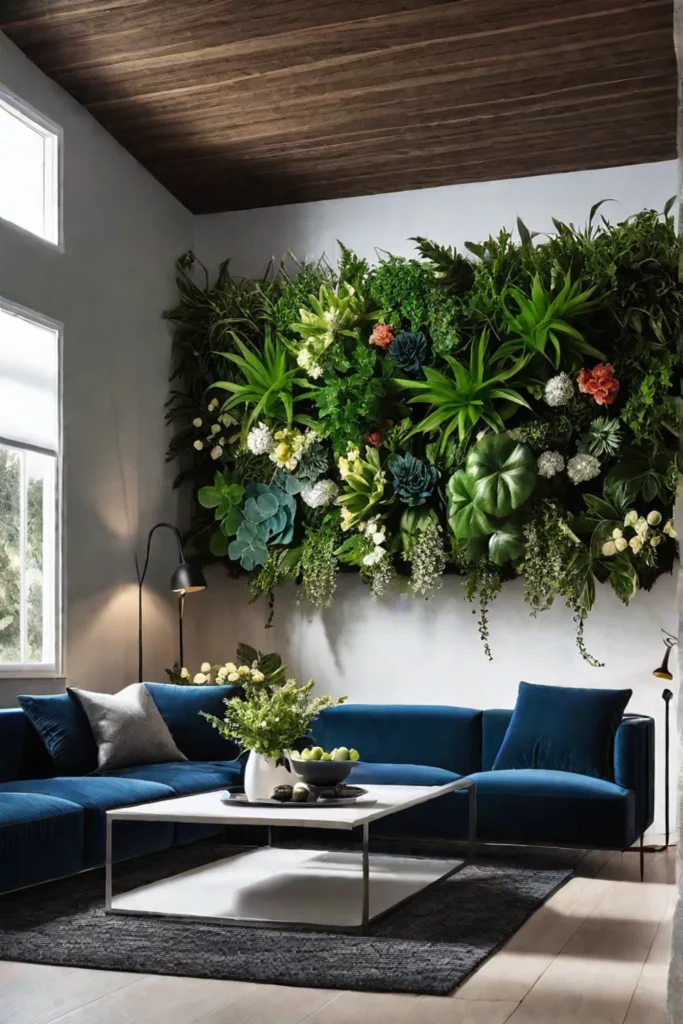
In this article, we’ll explore the many benefits of vertical gardening and explore a variety of innovative designs and structures perfect for small spaces and urban settings. Whether you’re a seasoned green thumb or a beginner gardener, you’ll find plenty of inspiration and practical tips to help you create your thriving vertical garden oasis.
The Benefits of Vertical Gardening
Vertical gardening is a game-changer for those of us with limited outdoor space. Growing plants vertically increases your usable growing area by up to 300% compared to traditional horizontal gardening. That means you can enjoy a wider variety of plants and produce in a fraction of the space.
But the benefits of vertical gardening don’t stop there. These space-saving gardens are also easier to access and maintain, as you can reach all the gardens without stepping on the soil. This helps reduce soil compaction and allows for better plant growth. Plus, the vertical orientation of the plants can help prevent the spread of pests and diseases, keeping your garden healthier and more productive.
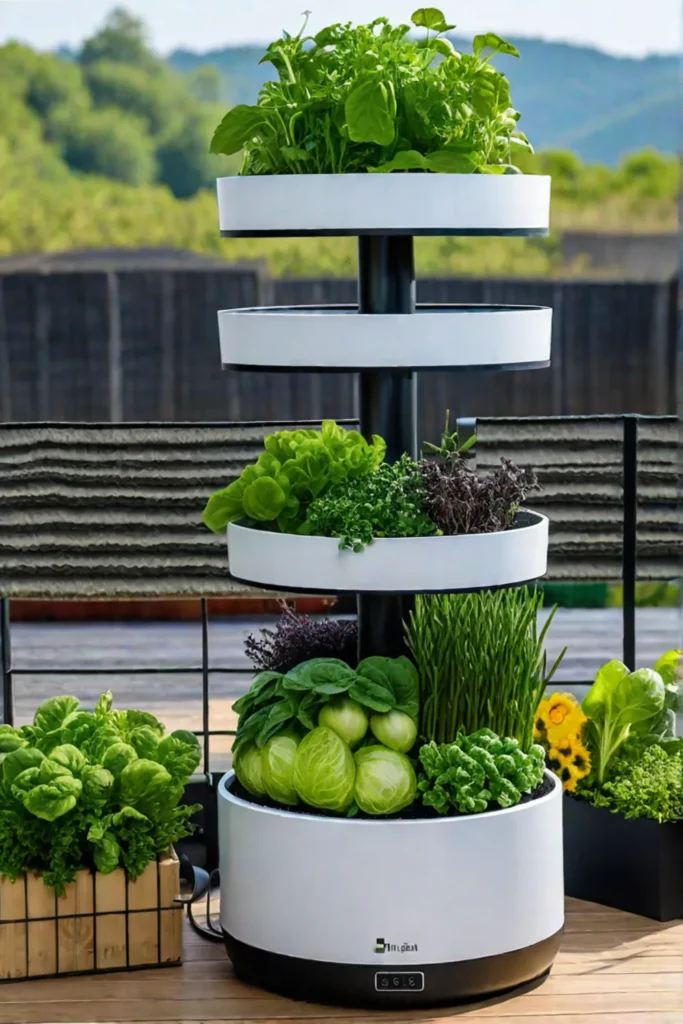
Another fantastic perk of vertical gardens is their ability to improve air circulation. By promoting better airflow around the plants, vertical gardens can help reduce urban heat island effects and enhance air quality. And let’s not forget the aesthetic appeal – vertical gardens add a touch of living, breathing art to any outdoor space, transforming bare walls and fences into lush, visually stunning displays.
Choosing the Right Vertical Garden Structure
With so many vertical garden options available, it can be tricky to know where to start. But don’t worry—I’ve got you covered! Let’s explore some of the most popular and practical structures to help you find the perfect fit for your space and needs.
Trellises and Arches
Trellises and arches are classic vertical garden structures that support climbing plants like beans, peas, and ivy. These lightweight, easy-to-install systems are a great choice for small balconies or patios, as they can be easily attached to walls or fences.
Wall-Mounted Planters
Wall-mounted planters are another fantastic option for vertical gardening. These customizable systems can be installed on any vertical surface, maximizing your available space. Some wall-mounted planters even have built-in irrigation, making them a low-maintenance choice.
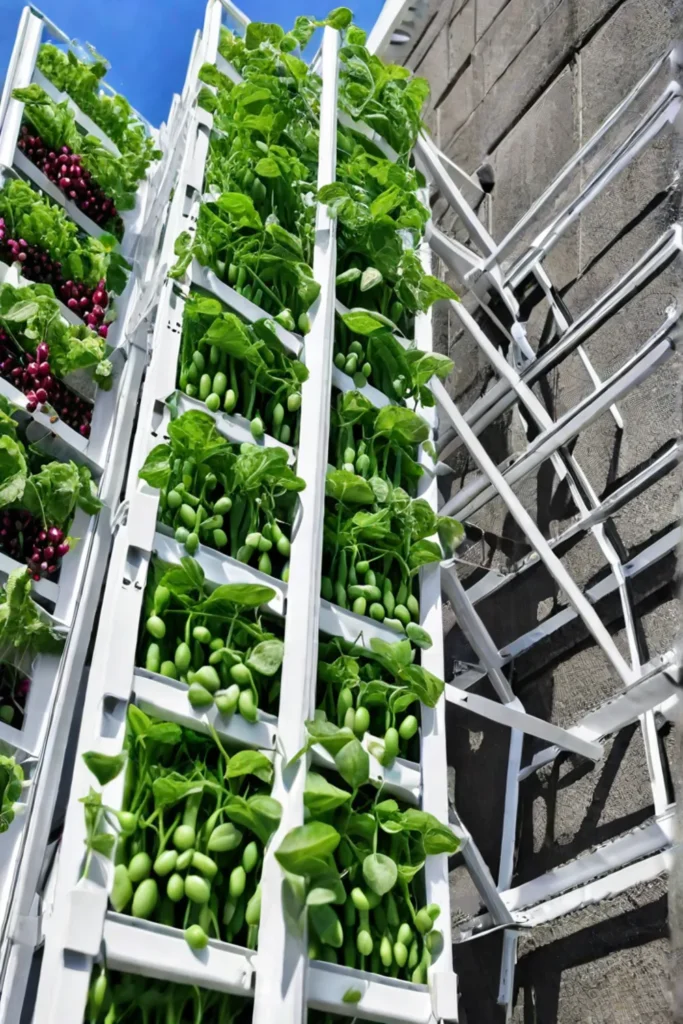
Tower Gardens
Tower gardens are vertical planting systems that use a tower-like structure to grow various plants, including vegetables, herbs, and flowers. These space-saving wonders are perfect for urban settings, as they can be easily tucked into tight spaces. Many tower garden systems also feature automated watering and lighting, removing the guesswork from maintenance.
Living Walls
Consider a living wall if you want to create a truly stunning vertical garden. These complex, ecosystem-inspired structures can support various plants, from ferns and mosses to small shrubs. Living walls are often used in commercial settings to enhance the aesthetic appeal of buildings, but they can also be a beautiful addition to your outdoor oasis.
Choosing the Right Plants for Your Vertical Garden
Now that you’ve sorted out the structure, it’s time to choose the perfect plants for your vertical garden. Not all plants are created equal when it comes to vertical gardening, so it’s important to select species and varieties that will thrive in the unique growing conditions.
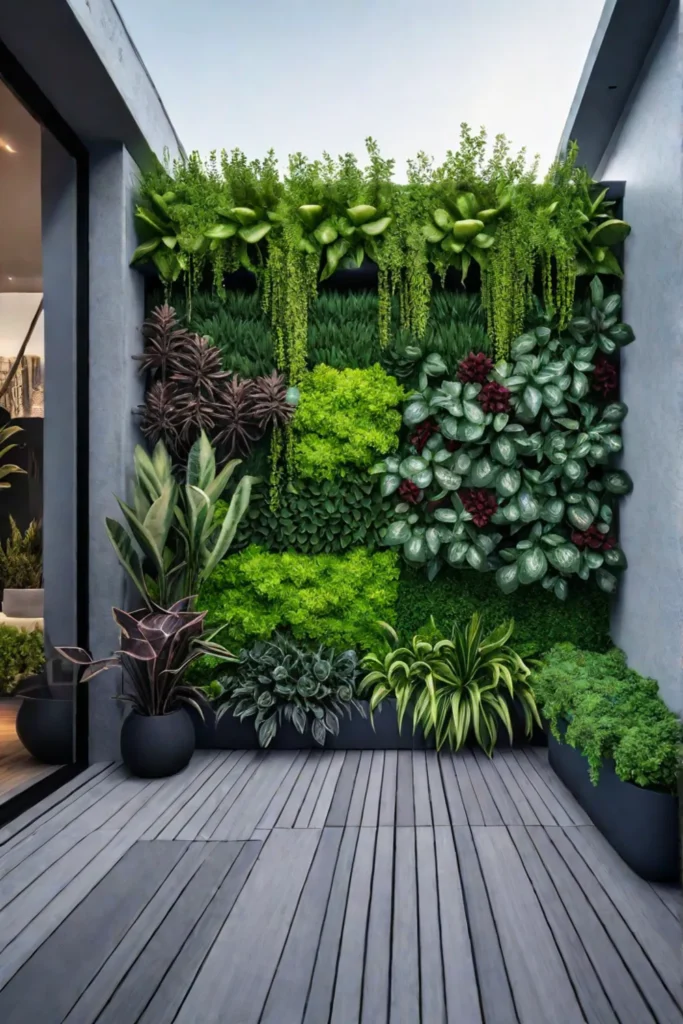
Look for vining and trailing plants, such as wisteria, clematis, and ivy. These natural climbers will beautifully fill your vertical space. Compact or dwarf varieties of vegetables, herbs, and flowers are also excellent choices, as they won’t outgrow their vertical confines.
Regarding soil volume, shallow-rooted plants like herbs and greens are well-suited for the limited space of a vertical garden. And don’t forget about drought-tolerant options, like succulents and cacti – these hardy plants can thrive with minimal watering, making them perfect for low-maintenance vertical gardens.
Designing and Constructing Your Vertical Garden
Bringing your vertical garden to life requires careful planning and execution. Start by selecting durable, lightweight materials that can support the weight of the plants and soil, such as wood, metal, or even repurposed items like pallets or old tires. The proper irrigation and drainage systems ensure the structure is stable and secure.

When designing the layout, consider factors like accessibility and ease of maintenance. You’ll want to be able to reach all parts of the garden for tasks like watering, pruning, and harvesting. Some vertical garden structures even incorporate dual-purpose features, like providing privacy or shading in addition to growing plants.
Maintaining a Thriving Vertical Garden
Keeping your vertical garden healthy and productive requires specialized care and attention. Proper watering is crucial, as the vertical orientation can make plants more susceptible to drying out. Invest in a self-watering system or create a regular watering schedule to ensure your plants get the moisture they need.
Fertilizing is also important for maintaining plant health and productivity. Choose a balanced, water-soluble fertilizer and apply it regularly, following the manufacturer’s instructions. Pruning and training your plants is another key maintenance task, helping to keep them tidy, productive, and within the confines of your vertical garden structure.

Finally, be on the lookout for pests and diseases. Vertical gardens can be susceptible to aphids, spider mites, and powdery mildew. Stay vigilant and address any problems quickly with organic control methods to keep your garden thriving.
Vertical Gardening in Small Spaces and Urban Environments
One of the best things about vertical gardening is its versatility. These space-saving gardens transform even the tiniest balconies, patios, and rooftops into lush, green oases. By incorporating vertical gardens into your urban living space, you can enjoy the benefits of homegrown produce and the mental well-being of interacting with nature while contributing to a more sustainable and eco-friendly environment.
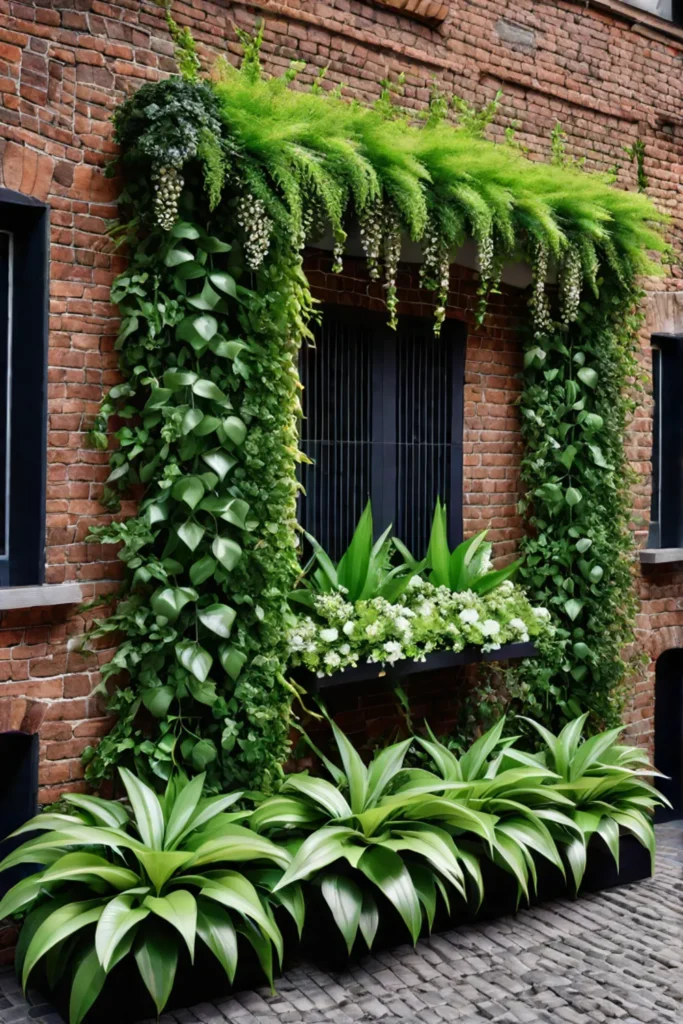
Inspiring Vertical Garden Design Ideas
The possibilities for vertical garden design are truly endless. From decorative and ornamental displays to functional vegetable and herb gardens, the options are limited only by your imagination.
Imagine a vibrant living wall cascading with ferns, ivy, and succulents, adding a touch of natural beauty to your outdoor space. Or picture a vertical garden bursting with juicy tomatoes, fragrant basil, and crisp lettuce, providing a steady supply of fresh, homegrown produce.
No matter your style or growing goals, there’s a vertical garden design out there that’s perfect for you. So why not get inspired and start planning your urban oasis today?
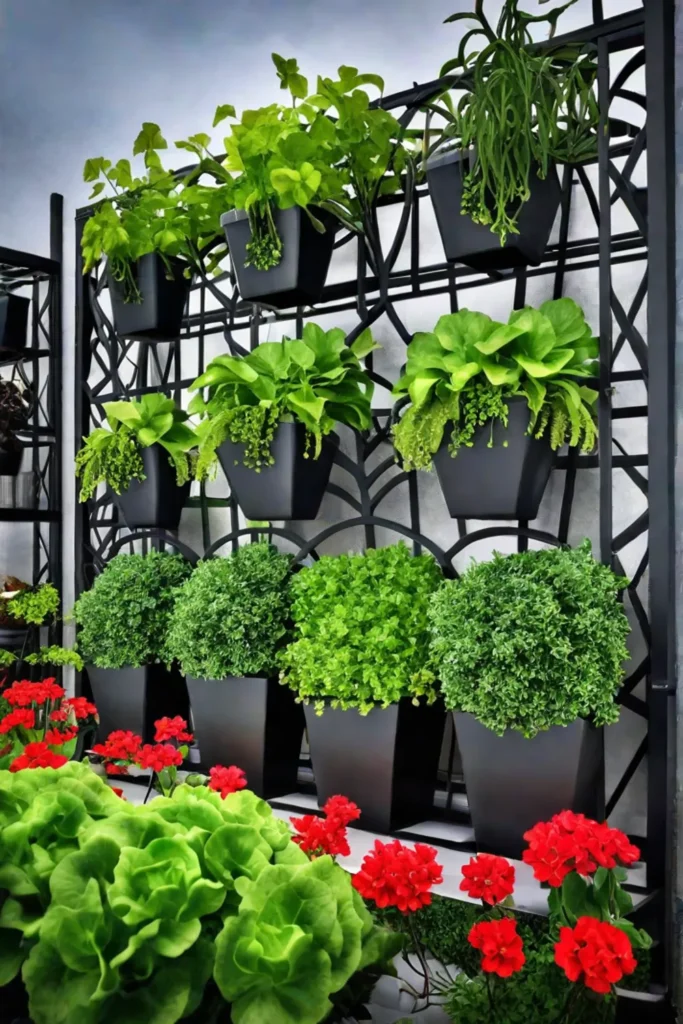
Unlock the Potential of Your Small Space
Vertical gardening is a game-changing solution for transforming even the tiniest spaces into lush, green havens. Maximizing your available vertical space allows you to enjoy a diverse array of plants, from ornamental beauties to bountiful edibles while reaping the numerous benefits of these space-saving gardens.
So, what are you waiting for? Grab your gardening gloves and get ready to unlock the potential of your small space with the power of vertical gardening. With creativity and the right know-how, you can turn your bare balcony or patio into a thriving, sustainable oasis that will delight your senses and nourish your soul.










